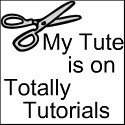
I happened to read someone's blog a few days ago, I got there through Totally Tutorials, and this lady had made little felt fish to "catch" for her 2 & 1/2 year old son. They were really cute. I read a few more of her posts and I found out that she was using Montessori method (I think she was also training to become a Montessori teacher) for all kinds of activities. It struck me how interesting and nice it was - even for myself, especially all the sensory games, so I will find out more about it and try it out.
I have started with something already, something I thought would be simple, yet interesting to my little daughter: play rice.
You will need:
* Some rice. I had open pack with about 150g of rice in it, which is absolutely enough to make a complete mess of the floor, if you let them! :D
* 4 cups (I used little glasses, but if your child is old enough, he or she might want to help with the mixing)
* Food colouring (Mine came from Tesco, as usual, cost about 80p a bottle, and it does last quite a long time. And you only need three colours: red, yellow and blue.)

* Some containers to play with - like plastic bowls, ice cream boxes, a funnel, a little beaker, empty yoghurt pots (in West Country we have Yeo Valley Organic yoghurt, which has cardboard sleeve around transparent plastic pot, you can take the sleeve off easily and have a see-through pot to play with)
* A wooden spoon (And a metal or plastic one for yourself to pick everything up :)

* Playmat or blanket (optional, but I found it easier to slide the spoon around the mat, collecting all the dropped pieces of rice)
How to:
* Divide your rice into 4 roughtly the same sized amounts into the cups
* Add a drop or two from each bottle to the first three cups - yellow, red and blue. Mix. Add a drop of yellow and tiny drop of blue into the fourth. Mix. Now you have all 4 primary colours. Alternatively, you could make 2 more colours, 6 altogether, if you wish, to maybe teach your kids how complementary colours can be made - orange from yellow and red and purple from red and blue.
* Let the rice dry for about 10-15 minutes, then stir with your finger to see whether it has dried completely.
* Pour the different colours into different plastic pots (mixing them up is added fun!), add 1-2 empty bowls and a wooden spoon.
* Give to your child and enjoy!


Emily was occupied for ages. 40 minutes from when I checked the time, and I am pretty sure we had been playing for at least 15 minutes already. She was pouring the rice from one youghurt pot to the other and to the bowl and spooning it into different pots. And she kept saying "mix mix!", laughing and stirring it in the red bowl. She was so busy that I couldn't even put her tights on and fasten her dungarees properly after changing the nappy! My job, of course, was to "drive" the spoon around the mat and collect all the pieces that had fallen out, and there were LOADS of them. It was kind of fun, but my lazy innter voice kept moaning "Why oh why oh why couldn't you be a bit more careful?!" She did say "Oh dear" in her little voice every time she dropped some, though. :O She should enjoy being messy! :D
We have played with it several times now and she is still really interested. I think she has started being deliberately messy and pouring the rice on the floor now. :P
Other ideas for the same type of play:
*Buttons
*Pebbles
*Pasta shapes (they dye quite well, too, only it makes a bit fiddlier mixing)
Have fun!
kerli,
sincerely
















































